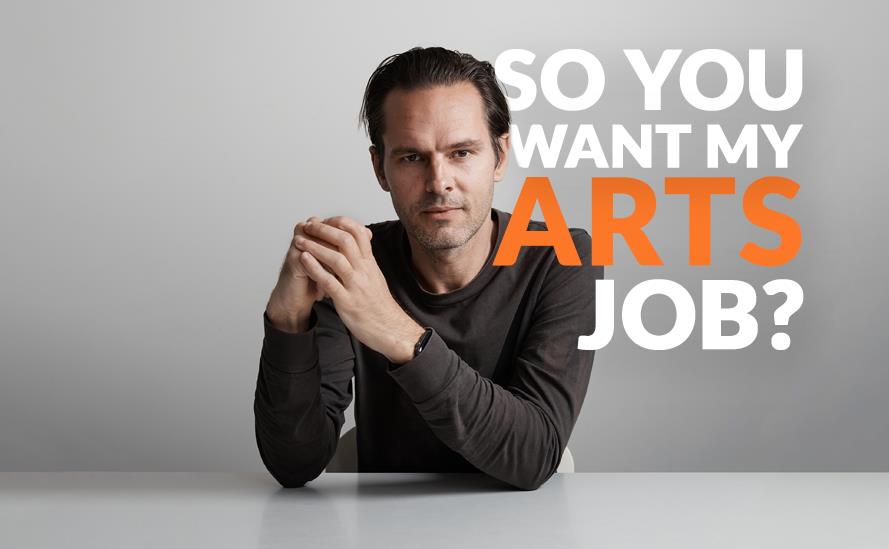While Daniel Boud is a Sydney-based photographer, it is clear his profile is national. He has carved a niche for himself within the competitive freelance world as a photographer who specialises in arts and culture.
His portfolio is peppered with both local and international talent both on and off stage. He has shot celebrities from Flume to Cate Blanchett and Ai Wei Wei, and his portraits have appeared on magazine, book and album covers, as well as most news sources.
As well as being Time Out Sydney’s Chief Photographer, Boud works regularly with many of Australia’s top performing arts organisations, including Sydney Theatre Company, Bangarra Dance Theatre, Belvoir St Theatre, The Australian Ballet, Sydney Dance Company and Sydney Opera House. He also boasts a range of clients from other creative and cultural sectors, among them Destination NSW, Foxtel, Vivid Sydney, MTV, Carriageworks, and Mercedes Benz Fashion Week Australia.
He has also been a finalist in the National Photographic Portrait Prize, the Moran Portrait Prize and the Head On Portrait Prize.
So how did he get his start, and what does his job entail? We recently sat down with Boud to help us navigate this career path.
How would you describe what you do to your parents?
Photography is a fairly universally understood medium, and can sometimes be derided as just ‘pushing a button’. But to make a career out of it you need to really be focused on fulfilling your clients needs. As much as what I do is creative and artistic, I think of myself as a tradesperson, fixing problems for clients and focusing on customer service.
A lot of my clients are arts organisations, and they book me to take pictures that will help them generate publicity to sell tickets or generate interest in shows and exhibitions they’re presenting.
‘As much as what I do is creative and artistic, I think of myself as a tradesperson, fixing problems for clients and focusing on customer service.’
What qualifications do you need to be a specialist art photographer?
No formal qualifications (although I have a communications degree). Photography jobs are awarded more on the strength of your portfolio and your ability to communicate well.
How did you get your start in this career – what was your first job?
I’ve had all sorts of jobs, my first one was selling ice creams at football and cricket matches when I was 15. And I had several years after university working as a web developer. I didn’t start making a full-time living from photography until I was in my late 20s when I landed a staff position as Chief Photographer at Time Out Sydney.
Prior to that photography was more of a passionate hobby – I hadn’t really considered how I could make a living out of it. But all through my 20s I was practicing a lot, and doing free or low-paid assignments for street press and friends.
What’s the most common misconception about your job?
Perhaps it’s the idea that it’s all glamour, and I’m brushing shoulders with celebrities all the time. Probably 80% of my work is behind a desk or traveling. There’s so much admin involved in running a business. And although I do get to meet some fascinating people, and share a brief intimate moment with them while I take their picture, it’s not like we become best friends after that. It’s a very fleeting connection.
In an interview for your job, what skills or qualities would you be looking for?
People skills are more important than technical ones. You can learn technical skills, but you need to be customer focused in this business. And your customer isn’t usually the person in front of your camera, it’s the client that books you for the job. So you really need to understand what your client needs and help them achieve that in the best way.
The other thing that’s essential is adaptability – often things change last minute and you need to be ok with that and adjust your approach calmly.
What’s changing in your professional area today?
In the past my clients could rely on media outlets to drum up publicity, but that’s changed a lot. Newspapers and magazines have much fewer resources and budgets to send out their own photographers. And journalists might be relying on a quick phone chat or pulling some quotes from a press release. Sadly arts media coverage seems to be in decline.
So arts organisations now need to be in the content creation game themselves. They need content for their social media channels and email lists. They need to supply their own compelling media images, rather than hope a newspaper will send a photographer.
That’s been a silver lining for me, because I now get hired to take those images for arts organisations themselves, rather than a media outlet.
‘Arts organisations now need to be in the content creation game themselves.’
How competitive is this job?
It is competitive, but I feel fortunate enough to have a steady stream of work and some loyal long term repeat clients which means I’m not overly stressed about competition. I also like to think I’ve got positive collegial relationships with other photographers who I might compete with for jobs. But I’m always aware of needing to offer a high level of service to all my clients so they keep coming back.
What’s an average week like?
Every week is different, but if I take this week as an example I’ve got several shoots on including some portraits of Sydney Opera House executives, documenting a children’s art installation, doing production images for The Australian Ballet, editing some advertising images for a bank, and photographing 9 drag queens at the launch event for Ru Pauls Drag Race Down Under.
In between all those shoots there’s loads of editing, replying to emails, quoting and invoicing. Plus, I’ve got two young daughters who take up considerable time too!





